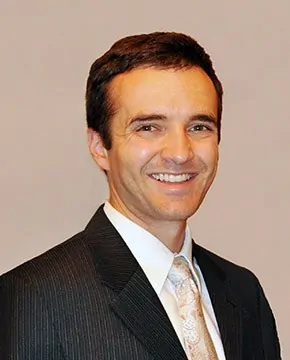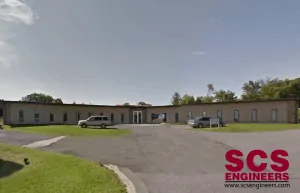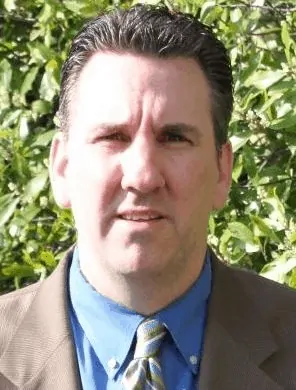

On June 1, 2016, the National Waste & Recycling Association (NWRA), the Solid Waste Association of North America (SWANA), and the Coalition for Renewable Natural Gas (RNG Coalition) provide comments on Pipeline Safety: Safety of Gas Transmission and Gathering Pipelines (FR20722) proposed rules to Mr. Mike Israni, Deputy Associate Administrator for Pipeline Safety – Field Operations at U.S. Department of Transportation. Comments by the three not-for-profits were made on behalf of the solid waste industry including companies, municipalities, and professionals.
The letter reflected the solid waste industry support for the efforts made by the Pipeline and Hazardous Materials Safety Administration (PHMSA) to ensure pipeline safety and included comments on the Advance Notice of Proposed Rulemaking, (ANPRM) as follows:
The revised definition for gathering line (onshore) as the basis for determining the beginning and endpoints of each gathering line requires further clarification. The definition remains too broad for applications that do not have the same level of risks since they are not accessible to the public.
PHMSA has elected not to propose rulemaking for landfill gas systems. However, it notes that pipelines that transport landfill gas away from the landfill to another facility are transporting gas and that PHMSA may consider this in the future.
The associations pointed out that the same rulemaking for landfill gas systems should apply to all forms of biogas that are collected and managed in a similar manner to landfill gas. Also noted was that low-pressure gas lines delivering biogas off-site to a dedicated end user need not be considered for further regulation as they do not present the same level of risk that natural gas or other high-pressure gas lines do. Landfill gas/biogas systems fall under federal, state and local regulators. Because landfill gas/biogas systems are regularly inspected for safety, generally use plastic piping, and do not present a substantial risk to the public the Associations feel that it is not necessary to consider additional regulation.
Contact NWRA, SWANA, RNG Coalition or SCS Engineers for more information.
Question: I have a small oxidation event at my landfill and am continually testing for carbon monoxide (CO) in the surrounding landfill gas (LFG) extraction wells. Using colorimetric tubes, I am monitoring the readings which range from 5-10 parts per million (ppm). Is there an accepted standard for background carbon monoxide in LFG? Moreover, how much inaccuracy is expected using the colorimetric tube testing?
Answer: Carbon monoxide (CO) can be found in small quantities even when there is no landfill fire. If your concern is landfill fire, most reputable resources state that a landfill fire generates readings of at least 100 ppm CO and more typically in the 500-1000 ppm range with 1000 ppm a reliable indicator that a landfill fire event may be present.
CO readings on colorimetric tubes are inherently less accurate and tend to run higher than laboratory results. Colorimetric tubes do provide value as a real-time indicator versus subsequent lab results, and can be used as an index reading, calibrated by lab results later. If you’ve had a landfill fire event before, with CO levels greater than 100 ppm, the lab confirmed 5-10 ppm CO could be residual left over from the earlier event.
Although some people believe that the presence of CO at almost any level is an indicator of landfill fire, recent laboratory tests show that CO can be generated at values up to and over 1000 ppm by elevating refuse temperatures without the presence of combustion (fire). Other tests have shown that high values of CO are found in some landfills with no current landfill fire and no indication of a past landfill fire. This information supports that it is possible that Elevated Temperature (ET) Landfills can have CO levels over 1000 ppm CO without the presence of combustion or landfill fire.
In the end, CO can be an indicator of landfill fire, but not always, as described here. Low methane, high carbon dioxide, and even landfill temperatures above 131 degrees F may or may not be indicators of past or current landfill fire. Physical indicators of a landfill fire may include rapid settlement in a localized area, cracks and fissures, smoke and flame, melted landfill gas system components, and char on the inside of LFG headers and blower/flare station components such as a flame arrester. However, most of these indicators can occur at ET landfills as well without the presence of fire or combustion.
A professional landfill gas engineer is needed to assess these conditions as a whole, and make a judgment on the underlying driver, condition, and resolution.
Have a question for our SCS Professional Engineers or Field Staff? Just ask here.
Landfill and Landfill Gas Services at SCS Engineers.
The drainage layers of landfill final covers normally go through a rigorous flow capacity evaluation. This evaluation is necessary to ensure that the volume of water reaching the drainage layer due to percolation of precipitation water through the final cover upper soil layer will not overwhelm the drainage layer in its flow path. If the flow volume in the geocomposite drainage layer is greater than the capacity of the drainage layer, water will exit the geocomposite and enter the overlying soil. The water entering the soil layer can easily saturate the lower portion of the soil layer, which will affect the stability of the slope. The geocomposite should always be designed to have a flow capacity greater than the flow rate of water running through it.
Concave areas of a landfill slope experience flow patterns quite different from slopes that go straight down. Slopes with concaved geometry have an unequal crest and toe lines – the toe line being smaller than the crest line. As a result, the width of the concaved slope decreases as the distance from the crest line increases in the downward direction. The narrowest width of the concaved slope is at the toe of the slope. The drainage layer on the slope experiences the same width change from the crest line to the toe line. This means that the overall width of the channels that carry water within the geocomposite drainage layer decreases toward the toe line, and, therefore, the depth of water in the channels increases. This phenomenon is referred to as flow convergence, and the convergence is toward the vertical centerline of the concaved slope. The flow convergence may be significant enough to increase the water depth in the geocomposite in the vicinity of the vertical centerline of the slope to greater than the thickness of the geocomposite. That, in turn, forces water out of the geocomposite and into the overlying soil, which may result in slope stability problems.
To complement the geocomposite flow capacity along the vertical centerline of the concaved slope in order to accommodate the higher water flow rates in the system, a pipe-gravel-geotextile (a burrito) may be constructed along the vertical centerline of the slope. The burrito, which would be positioned directly over the geocomposite drainage layer, increases the flow capacity of the system at and in the vicinity of the vertical centerline of the concaved slope. The burrito will receive water from the geocomposite where the water depth exceeds the geocomposite thickness. The burrito will be connected to the toe drain system at the toe of the slope, and water in the burrito will be discharged to the toe drain. The water in the toe drain, in turn, leaves the final cover through lateral drain pipes at regular intervals.
It should be noted that not every concaved slope requires a burrito. Some concaved slopes may be fairly wide, and the convergence of water inside the geocomposite may not be significant enough to cause the depth of water to exceed the geocomposite thickness. But, if the concavity of the slope is significant, a severe convergence of water in the geocomposite drainage layer is more likely. In that case, a burrito along the vertical centerline of the concaved slope is highly recommended.
A cautionary construction related note seems to be appropriate at this point. During construction, extra care should be taken to ensure that all geocomposite panels within the boundary of the concaved slope run such that the machine direction of the panels follows a path from the top toward the bottom of the slope. If some geocomposite panels are installed with the machine direction running across the slope width, significant turbulence in the flow will be created at the point where panels running in one direction transition to the panels running in the other direction. The turbulence will reduce the flow capacity of the geocomposite.
If you are planning to install a final cover over a portion of the slope that has concaved geometry and you want your final cover design to properly address flow volumes in the geocomposite drainage layer, please contact us. SCS Engineers has extensive experience with these types of circumstances, and we will gladly review your case and make recommendations. Learn more here.
If you have comments or questions about this article, please contact Dr. Ali Khatami.
Ali Khatami, Ph.D., PE, LEP, CGC, is a Project Director and a Vice President of SCS Engineers. He is also our National Expert for Landfill Design and Construction Quality Assurance. He has nearly 40 years of research and professional experience in mechanical, structural, and civil engineering.
Dr. Khatami has acquired extensive experience and knowledge in the areas of geology, hydrogeology, hydrology, hydraulics, construction methods, material science, construction quality assurance (CQA), and stability of earth systems. Dr. Khatami has applied this experience in the siting of numerous landfills and the remediation of hazardous waste contaminated sites.
Dr. Khatami has been involved in the design and permitting of civil and environmental projects such as surface water management systems, drainage structures, municipal solid waste landfills, hazardous solid waste landfills, low-level radioactive waste landfills, leachate and wastewater conveyance and treatment systems. He is also involved in the design of gas management systems, hazardous waste impoundments, storage tank systems, waste tire processing facilities, composting facilities, material recovery facilities, landfill gas collection and disposal systems, leachate evaporator systems, and liquid impoundment floating covers.
“Our clients enable SCS to build, grow, and sustain an engineering firm dedicated to solving environmental challenges,” said Jim Walsh, President and CEO of SCS. “We sincerely thank our friends, colleagues and, in particular, our clients for helping us achieve a highly regarded ranking each year.”
Firms are ranked in terms of revenue by Engineering News-Record magazine (ENR), as reported in the May 2, 2016, issue of the “ENR Top 500 Design Firms Sourcebook.” SCS has made the Top 500 list since its publication in 2002 and has ranked in the top 100 of that list since 2008.
When sorted by firm type, SCS Engineers is ranked the second largest environmental engineering firm (ENV) and is ranked in the “Top 20 Sewerage and Solid Waste” service firms in the nation. SCS has made this top 20 list since 2002.
Later in the year, ENR will publish additional resources and lists, including the “Top 200 Environmental Firms” issue, typically published in the month of August.
Learn more about our latest innovation, SCSeTools
Penton’s Waste360 Unveils the Next Generation of Leaders in the Waste and Recycling Space Award

The Waste360 “40 Under 40” awards program recognizes inspiring and innovative professionals under the age of 40 whose work in the waste, recycling, and organics industry has made a significant contribution to the industry. Dave Hostetter focuses on designing landfill gas systems and landfill gas flare systems. Although still considered a young professional himself, he serves as a mentor to other engineers, providing guidance with hands-on design as well as professional guidance.
Dave is a LEED® Accredited Professional (LEED AP) and a Certified Energy Manager (CEM). He brings to SCS Engineers an abundance of expertise and fresh ideas. Dave has a keen eye for troubleshooting and diagnosing control system issues. He serves SCS clients wholeheartedly and goes out of his way to provide assistance as well as the expertise needed to make their day-to-day operations run as smoothly as possible. Dave has participated in a multitude of landfill gas and leachate system designs, including designs for blower and flare stations, wellfields, gas conveyance piping, leachate pumping systems, and groundwater extraction systems. His vast and varying experience, honest and hard-working approach to projects, and his positive attitude make him a respected resource within the firm.
Dave lives the SCS mission, and clients trust him for his honest and comprehensive approach to their challenges. Dave takes ownership of his work and puts in the time and effort to deliver excellent results and maintain a great relationship with his clients. “Dave Hostetter sets the example of how an honorable, dynamic, and experienced engineer should act at SCS,” said Paul Mandeville, Senior Vice President and Director of SCS’s offices on the east coast. “Dave serves as a model of what young professionals and students should strive to become in their professional and personal careers; we are very proud of him.”
Please join SCS in congratulating Dave Hostetter on his recent recognition by Waste360.
Denver, PA. – SCS Engineers is opening a new office in Denver, Pennsylvania. The professional engineering staff currently serving clients in Reading will be joined by additional environmental consulting staff moving to the larger office space on November 1, 2015. The new office is located at:

SCS Engineers
22 Denver Road, Suite E
Denver, PA 17517
Tel: +1-610-382-3050
Denise Wessels, P.E., and SCS Project Manager stated, “We are strengthening our commitment to the Commonwealth, and the new location enables us to broaden our environmental services in the region, including SCSeTools®.”
SCS provides quality environmental consulting and construction services to municipal and private sector clients, and has recently expanded SCSeTools®, a platform for organizing big data collected at landfills. The tools collect data, and then organize the data into analyses, graphs, and maps that allow landfill owners and operators to predict, assess, and plan the operation and maintenance of their facilities. This insight helps with decision-making for operational excellence and helps to improve the bottom line.
Reprint

The SWANA Landfill Gas and Biogas Division is very busy right now with several important efforts. On the Rules and Regulations front, the U.S. EPA has promulgated two draft landfill gas (LFG) rules that were published in the Federal Register on August 27, 2015. These include a draft Emission Guideline (EG) rule and a supplemental draft New Source Performance Standards (NSPS) rule.
The proposed EG rule affects “existing” landfill sites (i.e., landfills that have not been expanded and were not newly constructed after July 17, 2014). The NSPS rule is a supplemental proposal that affects “new” landfill sites (landfills that are new or were expanded in capacity after July 17, 2014). Comments on both are due by October 26, 2015. Final issuance of both rules is expected in the first quarter of 2016. The Division Rules and Regulation and Advocacy committees are working together to develop SWANA’s industry comments on the rules.
The major focus of both rules is the current 50 Mg/year of non-methane organic compounds (NMOCs) emission threshold, which triggers the installation of a LFG collection and control system (GCCS). In the proposed rules, that threshold will be lowered to 34 Mg/year for all landfills except existing, closed sites. This appears to be the centerpiece of the U.S. EPA’s plan to create additional NMOC and methane reductions from landfills. With a lowered NMOC threshold, some landfills, particularly those that have been too small to trigger the installation of a GCCS, will be required to install them.
Other key components of the draft EG rule, which are likely to be similar in the NSPS rule, include the following:
The draft EG rule also provides clarifications on several existing rule topics, as well as topics where U.S. EPA decided not to include such items in the rule:
During the comment period, the EPA also is looking for public comment on:
The EPA will have the ability to add more provisions to the final version of the rule based on the information submitted as a part of these information requests. This means the industry must make a strong case to the EPA to get them to consider our opinions on these issues.
Comments on this article should be addressed to Patrick S. Sullivan, Senior Vice President, SCS Engineers, at 916-361-1297 or